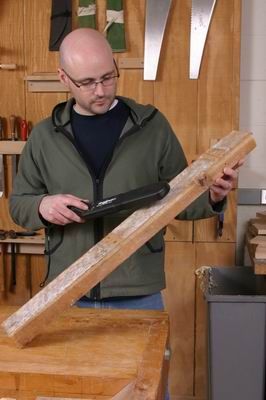
This ain't a treasure hunt. Before I ran my handplanes over this section of old stud, I checked it for nails and buckshot with a handheld metal detector.
Earlier this year, I posted a blog asking for help identifying some good low-cost alternatives to traditional furniture woods. I eventually wrote an article featuring 12 different woods (see it here: Low-Cost Lumber). I got some interesting responses. A lot of people, evidently, use pallet wood. I recently came into possession of a pallet made from ash and later this winter I plan to make something from it. I’ll run a series of blogs on that adventure. But right now I’m working on a small box for my mom. The box sides will be cherry (scrounged from the scrap bin) and the top and bottom will be made from panels that I made from a wall stud taken out of my house. The stud is some kind of softwood and is about 100 years old. Needless to say, it is dry. The photos above show how I got the stud into working condition, and the two panels after glue up. The knots and such will be cut out before they are used for the box. I’ll start making the box in earnest this weekend, and I’ll post some more photos at a later date to show the progress. As of now, I have the top and bottom panels glued up (but not cut to final size), and I’ve resawn a thick piece of cherry to make the sides (I want a four-corner match). This weekend: cut dovetails, fit the top and bottom, and glue-up. (Post-construction note: I decided against the dovetails, and just went for mitered corners. I think I made the right decision.)
Have you ever done anything similar? If you have, post your project in the galler and let me know about it in the comments below. Also, feel free to comment on what I’ve done so far.
Oh, perhaps I should mention that I didn’t just yank some random stud from a wall. I’m actually doing some extensive renovations in my house and I’ve taken down one wall and made a big opening in another. Neither wall was load-bearing.

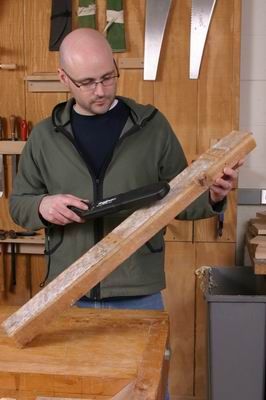
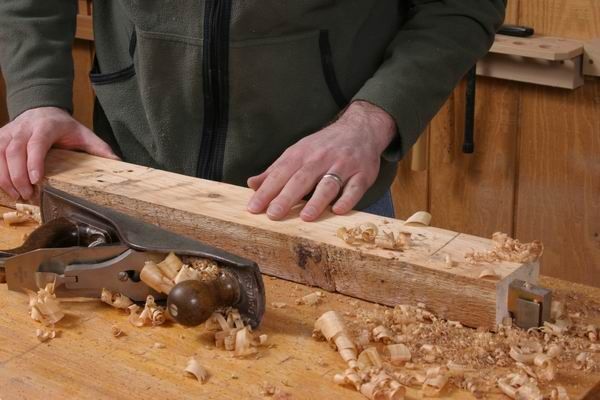
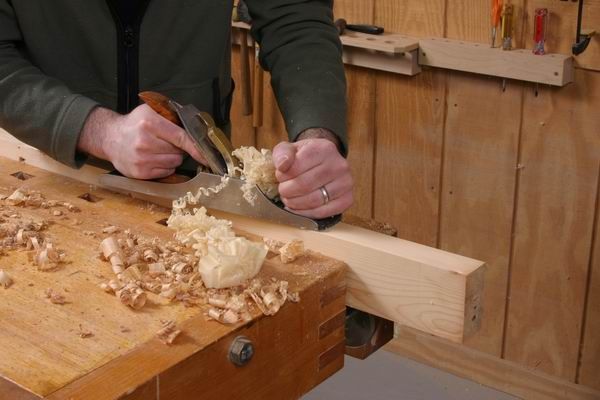
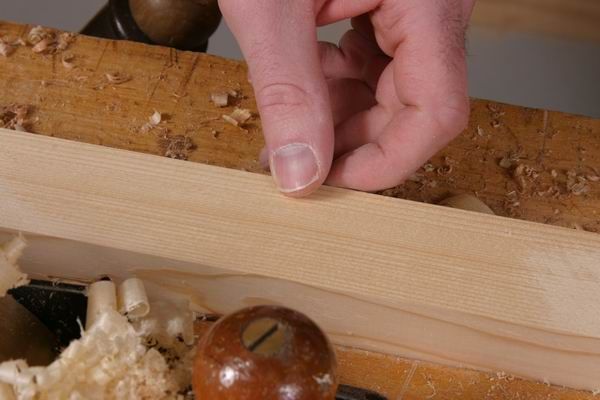

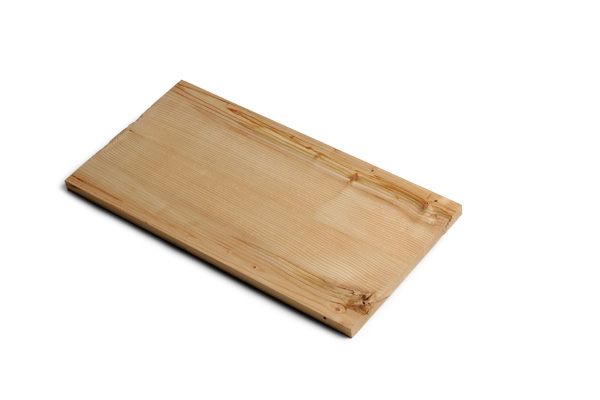







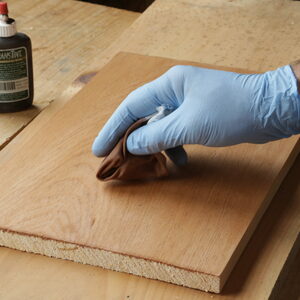
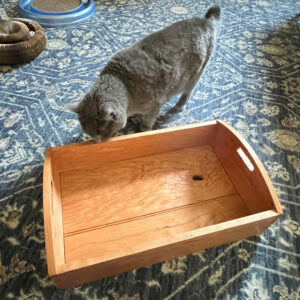
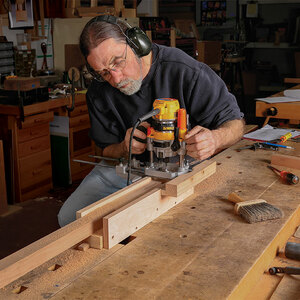











Comments
I'm lucky enough to work with reclaimed timber for a living, but we take a slightly different approach at our shop, letting the 'character' of the wood come across in the finished pieces. So it's out with handplanes and in with angle-grinders, creating showers of sparks every time we hit a nail. Great fun!
I recently completed a cabinet made from reclaimed walnut, using hand tools. It was a wonderful experience. Regarding the wood, some main thoughts: 1) The vendor, Elmwood Reclaimed Lumber, in Missouri, was primarily a supplier of floor boards. But they had some walnut from two old barns, posts and some 16" wide tongue/groove floorboards. They denailed the material and also heated it to kill any bugs. 2) It was expensive, which is counter-intuitivedue since it's "used", but the processing costs are added in; 3) The color and grain were unbelievable. The walnut came from two different barns so there is a nice contrast between the posts, rails and panels. It's deep, deep red, almost like mahogany. I used no stain at all. 4)It was also very close grained due to its age and slower growth; hence it was and is very stable. I see this as a BIG advantage to reclaimed wood. 4) There were old worm holes throughout, but I cleaned out the dust and made no attempt to hide them. They look great.
I would use reclaimed wood again for a project. It was a real joy to find the beauty below the surface, and to think that some old barn wood could become a piece of furniture. Here is a link to my project: http://www.flickr.com/photos/mnwwg/3836945572/in/set-72157606564469864/
I have a supply of Heart Pine that was removed from a Bank that was built here in Beaufort, SC two hundred years ago. It was given to me by the gentleman who removed this wood. Once it is cleaned up it is a joy to work with. In return I made a toy box for his daughter. I tried to upload the photos to the gallery but they were too big. You can view them by going to http://picasaweb.google.com/Hildy888/WoodworkingProjects#. They are the last three photos labeled "Heart Pine Toy Chest", "Toy Chest - End View" & "Toy Chest with non slip". I have some two and three inch Heart Pine stock that has a lot of nails which I can't remove. I spoke to the folks at Timber Wolf band saw blades and they do not have a blade for my machine (Sears 12 ") that will cut these nails. I can remove the nails from the inch and one quarter floor boards so I will try to get some more of that stock.
Cheers, George Hildebrandt
I got the box glued together yesterday and made an ebony pull for the lid. I got a few minutes in the shop today and cleaned up another stud for the trays I'm making for the inside. Great news: beautiful, tight grained quarter-sawn wood underneath. I'll post a picture in my next blog.
I had a similar experience with studs removed from my 1925 home. True 2x4s, of course, with 16+ growth rings per inch. Unfortunately, it was only a short kneewall, so I don't have too much to work with.
Living in Malaysia, which I did for a few years, was a reclaimers' paradise. All timber used in the buildings there was local hardwood so any skip/dumpster outside a building being renovated would have a few lengths of timber which would have cost serious money in US or Europe. Usually after de-nailing and planing a superb piece of timber would emerge but it was nearly always tough on hand tool edges. Now I am back in Britian I still use reclaimed timber for workshop jigs but have to buy hardwoods for better pieces.
Living in Malaysia, which I did for a few years, was a reclaimers' paradise. All timber used in the buildings there was local hardwood so any skip/dumpster outside a building being renovated would have a few lengths of timber which would have cost serious money in US or Europe. Usually after de-nailing and planing a superb piece of timber would emerge but it was nearly always tough on hand tool edges. Now I am back in Britian I still use reclaimed timber for workshop jigs but have to buy hardwoods for better pieces.
My son wanted a reclaimed wood dining room table and I found a store in Virginia that made them out of fence boards. He liked the look and the store put me in touch with the source of the wood. They had a bunch of 5 inch oak fence rail and some timbers from an old barn that they de-nailed and dried and ran thru metal detectors. In Loudoun County most fences are painted black and the boards had been skim dressed so you could see some of the grain underneath. I jointed one side of each until just enough weathered character was still showing and then planed them all to three quarters of an inch on the back side. All knots with voids and all cracks were filled with black Apoxy, a clay and epoxy mix used in Hollywood to sculpt things for movies. The resulting black fill looks almost like dark open holes and cracks... very neat. I made aprons and tapered legs and breadboard ends for the top. I also made two company boards that could be added to each end to extend the seating when needed. I'll get my wife to put up some pix later since I'm too dumb with computers to do it myself. Now that the table resides with my son in Maine with wild swings in temp and humidity you can really see those breadboards work. The same company sold be a bunch of six inch cherry 5/4 reclaimed from the very center of the log where the knots are the worst and I am just finishing a kitchen table for my wife in the same manner. They call it reclaimed because they say that the sawmill throws out or burns that wood as it is not even close to being the clear quality they normally sell. I think it has great character. Will get pix or that project up as well. Wow was this long winded or what ?
Deconstruct old furniture. Not nice old furniture, but the kind people set out for the trash when it doesn't sell in the garage sale. And Craigslist. Quick search of Denver finds walnut, cherry, mahogany, beech, maple, oak, teak, hickory, chestnut, etc... Some cheap. Example a couple of solid hickory cabinets $35.
Also, I recently installed birds eye maple floors, 3 1/2" X 3/4". I got it for about $2 a foot at lumber liquidators. They have deals where you have to buy all of what they have left of smaller sized odd lots. In my case it was 480sft. But they had lots as low under 100sft of various exotic and American hardwoods. I have a fair amount of birds eye left over that I will use for projects in some cases ripping off the tongue and grooves and planing off the corrugated back side. I'll have 3" x 2 3/4" up to 6'.
For exotic and the rarer American hardwoods overstock and odd lot flooring can be found a lot lot cheaper than s4s off the shelf. Also, peoples hardwood floor leftovers can be found dirt cheap on Craigslist, if not free.
Here's a current ad:
We have torn out about 150 square feet of hard wood floor. The wood is newer, and was in good condition (about 3 years old). It could not be re used as flooring as much of it came up broken or splintered. However it is quality wood, and could be used for something else if you are creative.
Its yours if you can pick it up!
Previously I mentioned some nails in Heart Pine that I couldn/t remove. These pieces are 6/4 and 8/4 stock about ten inches wide and four to seven feet long. I should have explained that they were driven into the edge about every two inches. Well I found out that I can clamp the piece to two saw horses with the nailed edge free of the saw horses. I then snap a chalk line about one and one quarter inch in from the edge and use a sawzal with a saw blade marked for "wood with embeded nails". It is a little awkward but it is safe and solves the problem.
Cheers, George Hildebrand
I have some cherry that has worm holes in it. How do I tell if they are still in the wood.
I work alot with the old heart pine floor joists. Usually 2x8s and both thicker and wider.
I typically cur about 3/4" off each side with the table saw with a newer cheap blade. This way it gives me a fresh cut to find nails. They can usually be removed after this.
Then I split with the bandsaw!
I love reclaimed wood!!!!
Log in or create an account to post a comment.
Sign up Log in